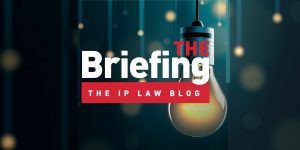Podcast: Play in new window | Download
 The US Copyright Office issued a policy statement regarding the registration of works that contain material generated by AI technology. Scott Hervey and Josh Escovedo talk about this clarification on this episode of The Briefing by the IP Law Blog.
The US Copyright Office issued a policy statement regarding the registration of works that contain material generated by AI technology. Scott Hervey and Josh Escovedo talk about this clarification on this episode of The Briefing by the IP Law Blog.
Watch this episode on the Weintraub YouTube channel here.
Show Notes:
Scott:
With the buzz still fresh from the copyright office’s partial revocation of the registration issued to Kristina Kashtanova for the graphic novel, Zarya of the Dawn. On March 16 the Copyright office issued a rule concerning the registration of works containing material generated by Artificial Intelligence. We are going to talk about this on the next installment of the Briefing by the IP Law Blog
Scott:
On March 16, the Copyright office issued a rule concerning the registration of works containing material generated by Artificial Intelligence. The purpose of the rule, which really is a policy statement, is to clarify the Copyright Office’s practices for examining and registering works that contain material generated through the use of artificial intelligence technology. First, a little background on why the Copyright Office had to issue this rule in the first place.
Scott:
Generative artificial intelligence technologies are capable of producing a variety of expressive material, including text and images, in response to text provided by a user. Most generative AI technologies operate through “prompts,” which are text commands and contain text describing what the AI should generate. The output can be text, graphics or audio and are based on the input material the AI has been trained on.
Josh:
Generative AI technologies have raised questions about whether the material produced is protected by copyright, and if not, to what extent a work consisting of both human-authored and AI-generated material may be registered. These questions are not hypothetical; the Copyright office has received and is receiving applications to register AI generated work, with the first dating back to 2018. That application was for a visual work called “A recent entrance to paradise” We previously covered the decision by the Copyright Office Review Boards’ refusal to register the work based on fact that the work was made without any creative contribution from a human actor. And recently, the office reviewed and partially revoked an application for the graphic novel Zarya of the Dawn where the graphics were created using the AI tool, Midjourney. We recently covered that story as well.
Scott:
And while the Copyright office’s decision in Kashtanova did provide some understanding as to the Office’s position, this rule provides guidance for persons attempting to register works that incorporate AI generated material.
Scott:
First, it’s imperative to understand that the Copyright office will not recognize a copyright in AI generated work and due to pre-emption, there is no way that state law could provide any similar type of protection. This means that any work generated by an AI technology is in the public domain, free for all to use.
Josh:
So, does this mean that all work generated by an AI technology is not copyrightable.
Scott:
Not necessarily. It’s about who is ultimately responsible for the creation of a work’s traditional elements of authorship. If they are produced by a machine solely in response to a text prompt, then the “traditional elements of authorship” are determined and executed by the technology—not the human user. However, if a human exercised the ultimate creative control over how a generative AI technology interprets prompts and generates material, or if a human selects or arranges AI generated material in a sufficiently creative way or if a human modifies the AI generated material to such a degree that the modifications meet the standard for copyright protection, that the portion of the work representing the human authored aspect of the work would be protectable.
Josh:
But copyright protection would not extend to the work in its entirety, only that portion of the work over which a human exercised ultimate creative control.
Scott:
That’s right. Putting aside manual human manipulation of the AI generated material, the copyright office stated users do not exercise ultimate creative control over how current generative AI technologies interpret prompts and generate material. But, if they did…. if the user exercised ultimate creative control over the output, would the technology still be AI.
Scott:
The rule ends with guidance for applicants seeking to register works incorporating AI generated material, however on the application an applicant must describe the authorship that was contributed by a human. Applicants should not list an AI technology or the company that owns such AI technology as a co-author because the applicant used it when creating the work. Also, an applicant must explicitly exclude AI generated content from the copyright claim.
Josh:
I am sure this is not the last of this issue
Scott:
It certainly isn’t. Last week lawyers for Kashtanova filed a new application for a new piece of artwork produced by Stable Diffusion which uses Kashtanova’s own hand drawn art as one of the inputs. Her lawyers claim that Kashtanova’s exercise of control over Stable Diffusion made her the author of the work. This may be the first test case of the offices new registration policy